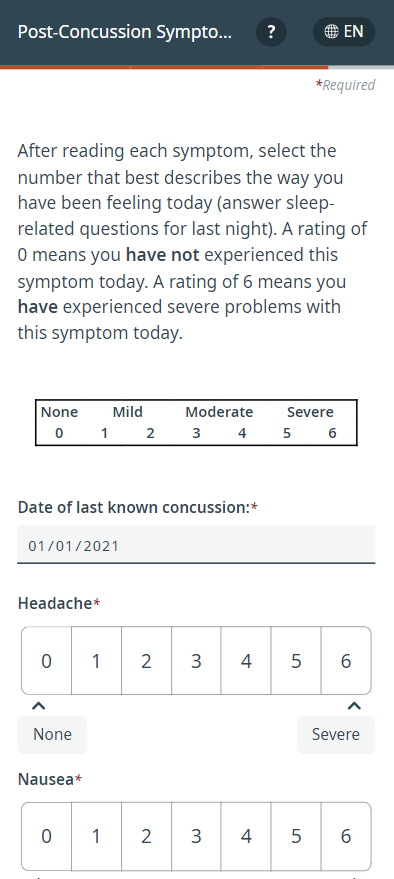- Summary
- Coming soon
- Early Access
- Appointments
- Communication
- PhreesiaOnCall
- Standardized content
- Updated PHR: Opioid Risk Tool print document
- Updated PHR: Medicare Secondary Payer Questionnaire (MSPQ) introduction screen
- Updated PHR: Bright Futures®, 2nd Edition
- New PHR: SWYC and PHR: SWYC-BPSC/PPSC
- New PHR: SEEK PQ-R and SEEK PQ-R Plus
- New PHR: Peripheral Vascular Health Questionnaire (PVHQ)
- New PHR: COPD Assessment Test (CAT)
- New PHR: Post Concussion Symptom Scale (PCSS)
Summary
Don’t have time to read the entire 24.2 Release Notes? We understand—you’re busy! Use the table of contents on the left to easily jump to different sections, if needed.
Coming soon
MediFind: Self-scheduling integration
We’re excited to announce that Phreesia’s self-scheduling feature will soon integrate with MediFind!
Upon launch, you’ll be able to embed self-scheduling links onto your clinicians’ MediFind profiles, allowing patients to self-select an appointment time that works best for them. This update will better align MediFind with your existing workflows, save staff time and improve the patient experience.
This feature will be available in an upcoming release and will be automatically enabled for organizations using self-scheduling. For additional details, please reach out to your Phreesia representative.
Adding nurse practitioners and physician assistants to MediFind
Currently, only practicing physicians with the certifications MD, DO, MBBS or DPM are listed on MediFind. But in an upcoming release, we’ll automatically create MediFind profiles for your nurse practitioners (NPs) and physician assistants (PAs), giving patients even more ways to schedule an appointment with your organization.
Once mid-level providers are added to MediFind, we will automatically add any scheduling functionality they already use in Phreesia, such as appointment requests or self-scheduling).
Stay tuned for more information and to learn when you can claim these profiles!
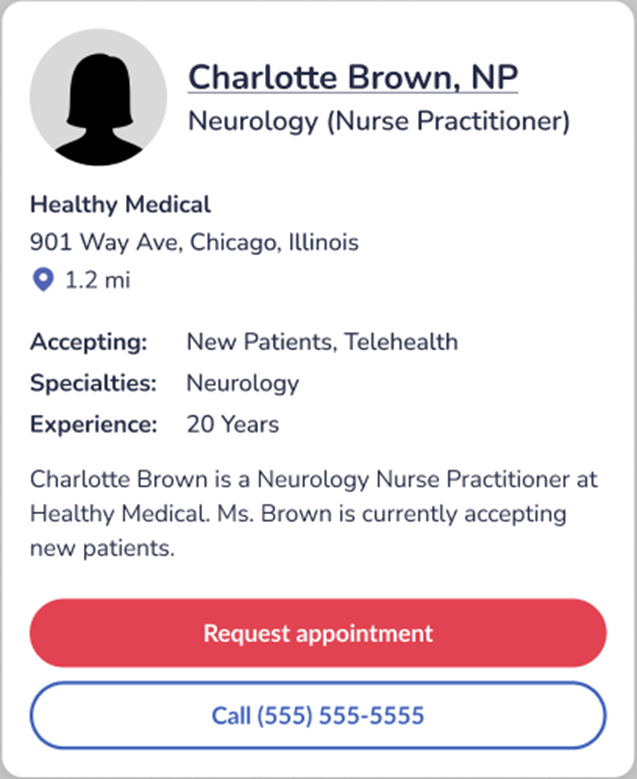
Early Access
Gaps in Care (athena)
Our new Gaps in Care tool helps patients stay on track with recommended preventive care. We’ll identify and send automated, personalized messages to patients, encouraging them to schedule the appointments they need. This tool streamlines the costly, manual process of closing gaps in care and helps organizations book more high-value appointments—without increasing staff effort.
Gaps in Care is currently available to organizations using athenahealth. Reach out to your Phreesia representative if you’re interested in joining this early access opportunity.
Appointments
Dashboard improvements: Chart number
With this release, we’re introducing two new functionality improvements to the Dashboard related to patients’ chart numbers:
- Chart number is now searchable from the main Dashboard
- Chart number now displays in the Patient Appointment overlay header
This update will help you search for patients on the Dashboard and keep track of patient data across systems.
This update will be immediately available upon release.
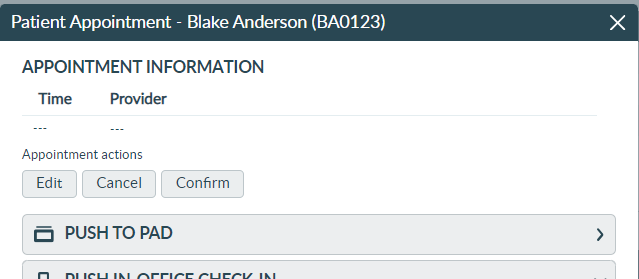
New Dashboard feature: PAM® level
We’ve added a new feature to the Dashboard so you can easily view a patient’s most recent Patient Activation Measure® (PAM) level, their PAM score, the date they most recently completed the PAM and the method of administration. Users no longer need to click on a patient’s profile to see their PAM results.
For additional details or enablement instructions, please reach out to your Phreesia representative.
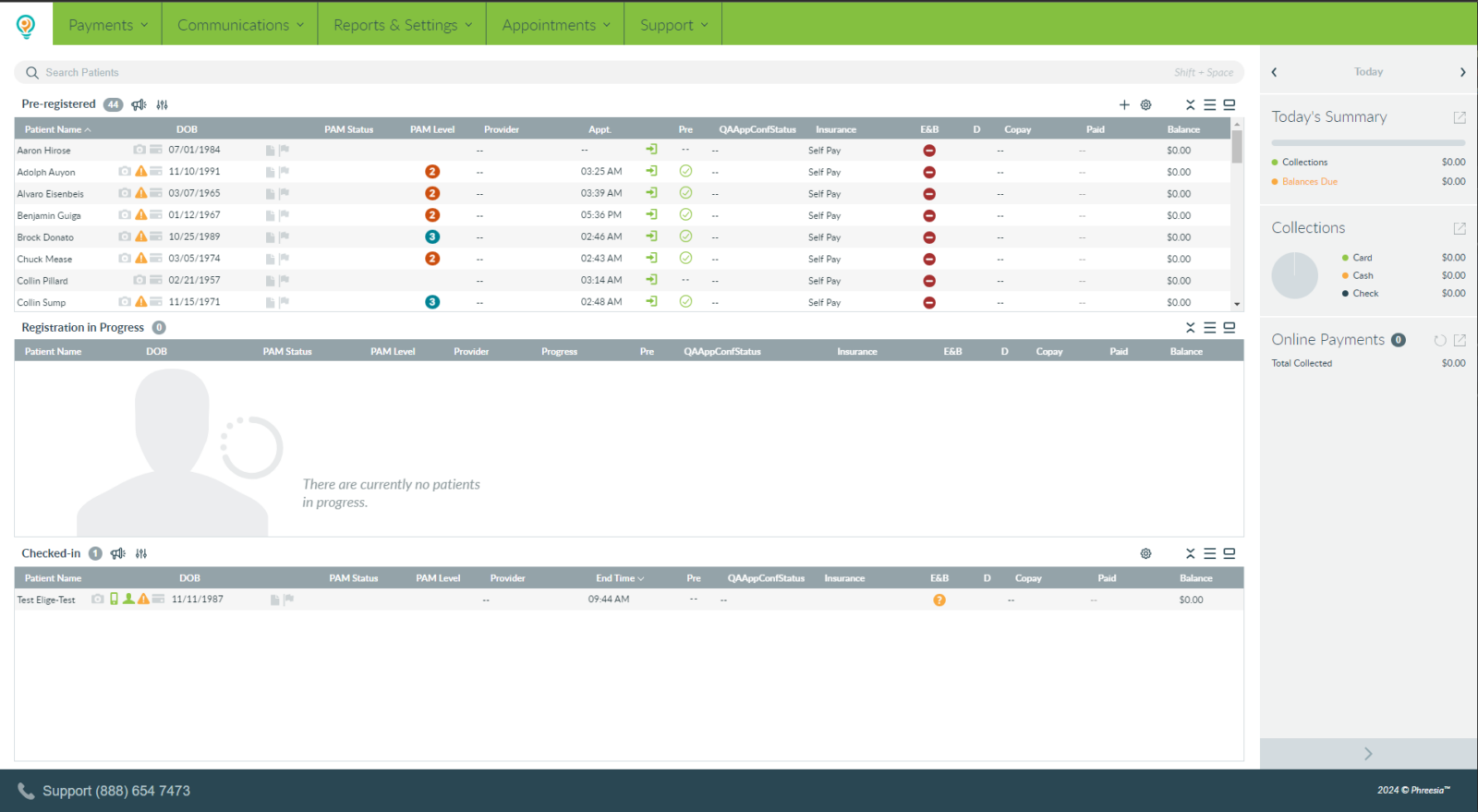
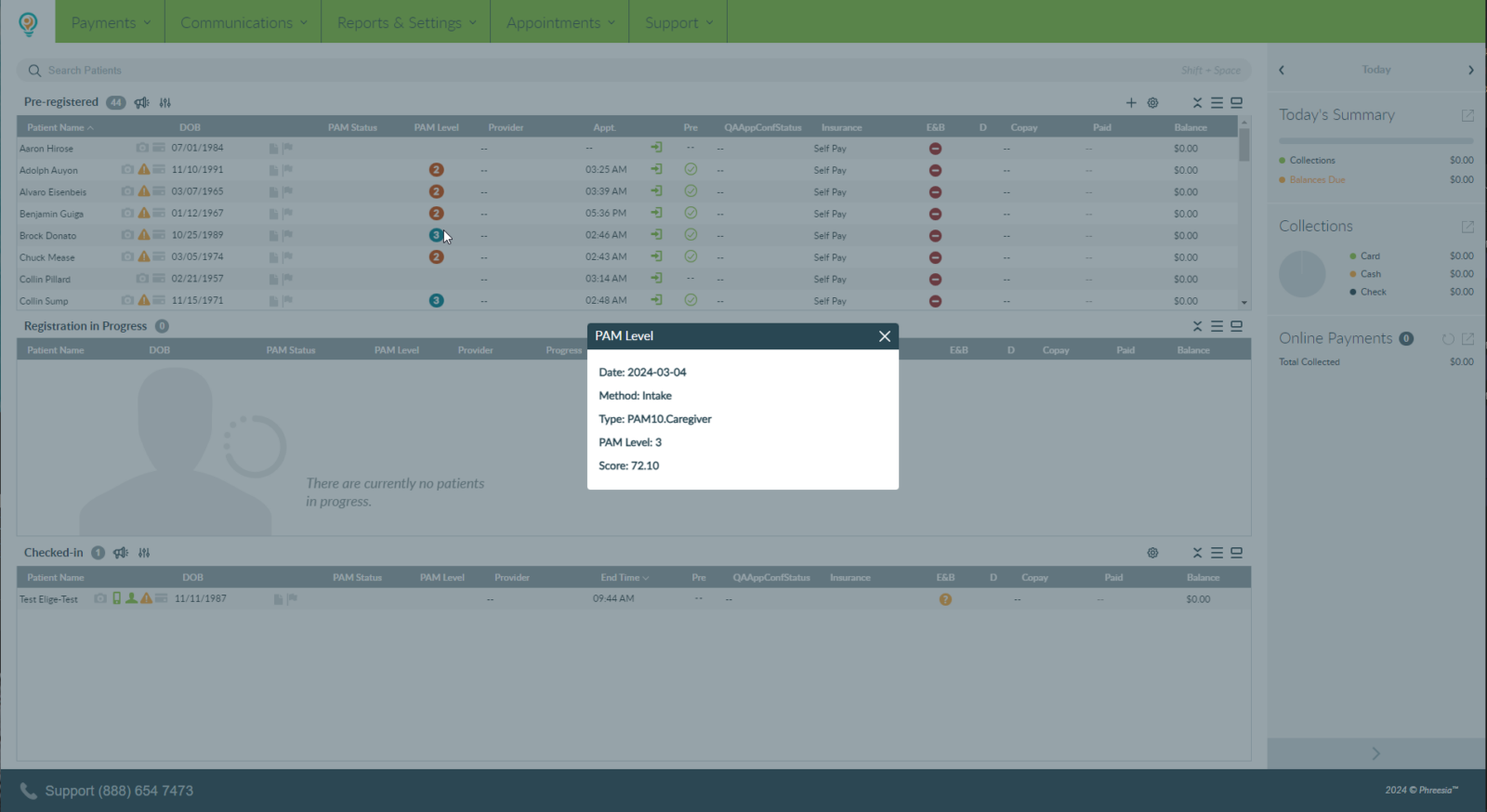
Communication
‘Patient scheduled’ message templates
Users can now configure multiple templates for the “Patient scheduled” message, which is the confirmation message that patients receive after completing self-scheduling or when their appointment request is accepted.
You can configure multiple message templates based on the patient’s provider, location and visit type. These customizable templates are already available for other messages, such as appointment reminders and registration prompts.
This feature will be immediately available upon release.
Patient Bill Pay: Resend a ‘bill pay’ notification
Previously, if a “bill pay” notification failed to send due to an incorrect patient email or phone number, users were unable to resend it until the next payment cycle.
Now, you can resend the notification manually from the “Actions” menu, and correct any missing or outdated patient contact information so that future notifications will successfully send.
This feature will be immediately available upon release to clients using Patient Bill Pay.


PhreesiaOnCall
Increase access to ‘Patient Lookup’ tool
Previously, only Manager-level users could initiate a Secure Patient Chat via the “Patient Lookup” tool in PhreesiaOnCall. Staff-level users could only initiate chats in response to a message, or by manually entering a patient’s phone number or email address.
Now, you can give Staff-level users access to initiate a Secure Patient Chat via the Patient Lookup tool. This update makes it easier to use Secure Patient Chat and reduces the risk of sharing personal health information (PHI) with the wrong patient.
For additional details or enablement instructions, please reach out to your Phreesia representative.
Standardized content
Updated PHR: Opioid Risk Tool print document
We updated the layout and made minor formatting adjustments to the print document tied to the Opioid Risk Tool module so it’s easily accessible for providers to review.
This update will automatically available upon release.
Updated PHR: Medicare Secondary Payer Questionnaire (MSPQ) introduction screen
We made a slight adjustment to the introduction screen language in the Medicare Secondary Payer Questionnaire global module.
This update will be automatically available upon release.
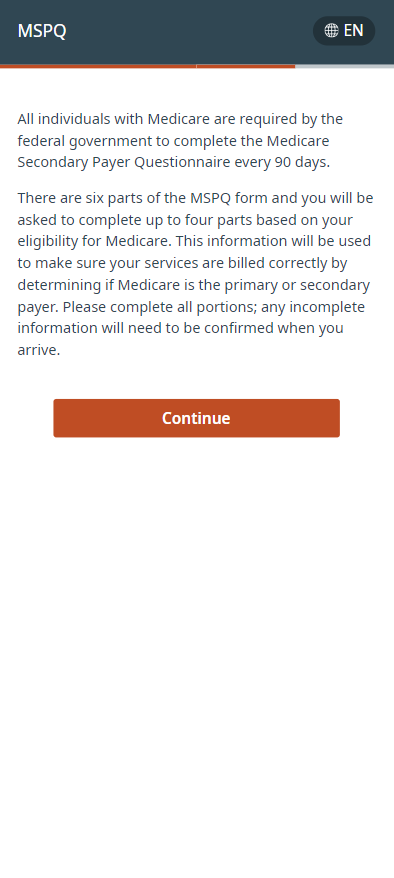
Updated PHR: Bright Futures®, 2nd Edition
We’ve updated all pronouns in the Bright Futures®, 2nd Edition Previsit Questionnaires (all parent- and patient-facing assessment forms) to reflect gender-inclusive language, as approved by the American Academy of Pediatrics.
All instances of “she/her/hers” and “he/him/his” have been replaced with “they/them/their(s).”
This change will be reflected in both the standardized modules and the custom printouts that accompany them.
This update will automatically be available upon release.
New PHR: SWYC and PHR: SWYC-BPSC/PPSC
We now offer the Survey of Well-being of Young Children (SWYC) for developmental screening, as well as a second module that only includes the Baby Pediatric Symptom Checklist (BPSC)/Preschool Pediatric Symptom Checklist (PPSC) questions. This tool assesses three domains of functioning for children under five years old: developmental, emotional/behavioral and family context.
Organizations can use this tool to help identify developmental disabilities early so patients can receive intervention as early as possible.
Two versions of the SWYC are available: A full version, and a version that includes only emotional/behavioral checklists.
For additional details or enablement instructions, please reach out to your Phreesia representative.
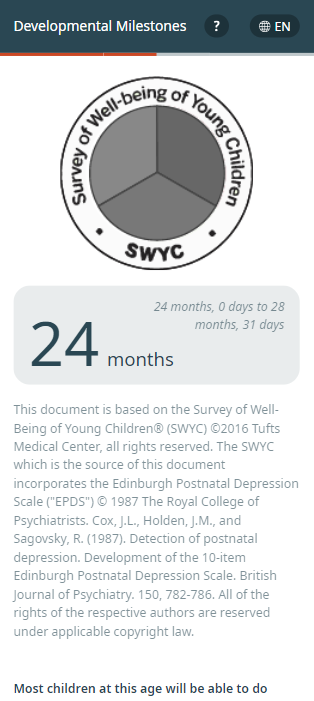
New PHR: SEEK PQ-R and SEEK PQ-R Plus
We now offer the Safe Environment for Every Kid Parent Questionnaire-R (SEEK PQ-R) and the SEEK PQ-R Plus.
The SEEK PQ-R is a social determinants of health screening tool that helps detect psychosocial problems, such as parental depression and substance use. It also screens for food insecurity, household violence, safety concerns and more.
For additional details or enablement instructions, please reach out to your Phreesia representative.
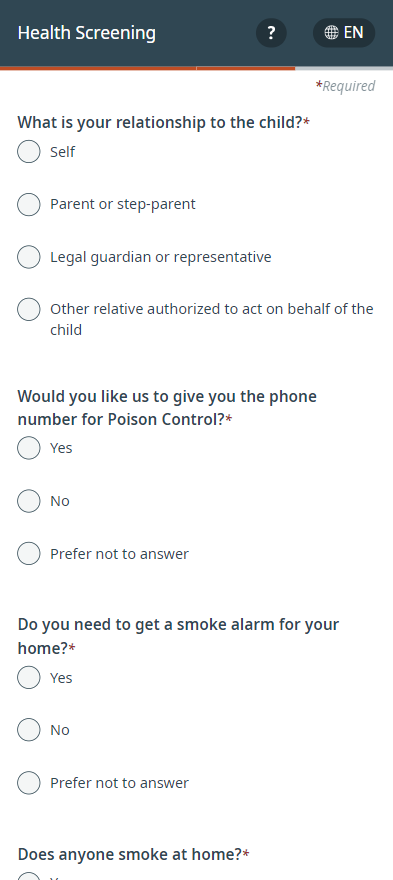
New PHR: Peripheral Vascular Health Questionnaire (PVHQ)
We now offer the Peripheral Vascular Health Questionnaire (PVHQ), a six-question tool developed by Phreesia clinicians to screen patients for signs of Peripheral Artery Disease (PAD).
For additional details or enablement instructions, please reach out to your Phreesia representative.
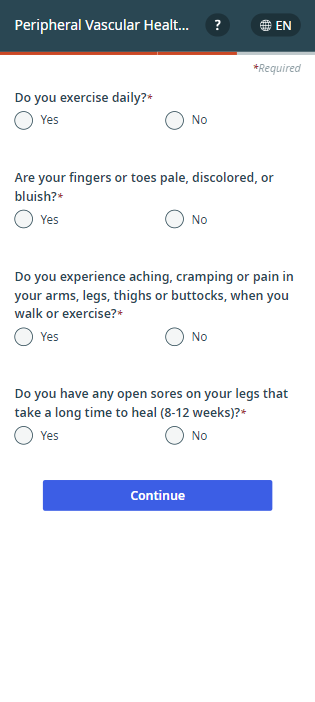
New PHR: COPD Assessment Test (CAT)
We now offer the COPD Assessment Test (CAT), an eight-question tool that helps assess the health of patients with COPD and can be used to evaluate the effectiveness of treatment.
For additional details or enablement instructions, please reach out to your Phreesia representative.
New PHR: Post Concussion Symptom Scale (PCSS)
We now offer the Post Concussion Symptom Scale (PCSS), a 21-item self-report measure that records concussion symptom severity.
For additional details or enablement instructions, please reach out to your Phreesia representative.
